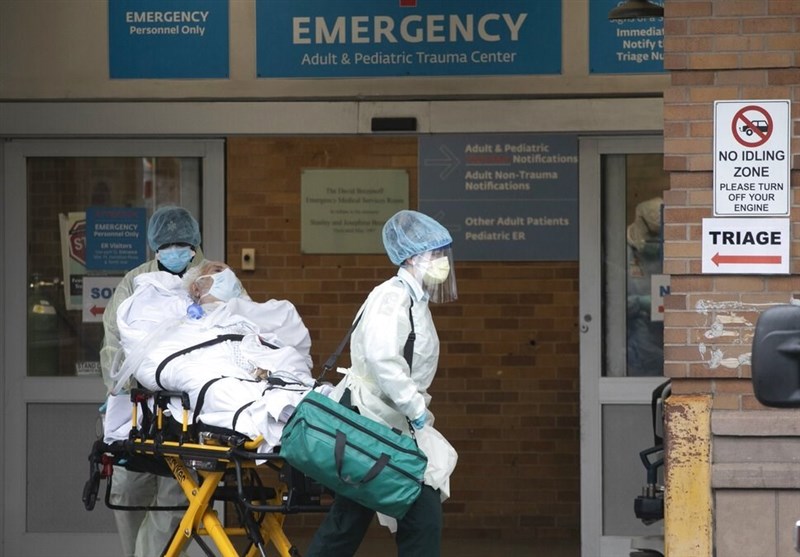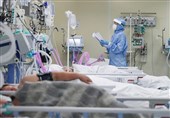Health Officials Say US Running Out of Money to Fight COVID-19
TEHRAN (Tasnim) – Health officials lamented on Tuesday that the United States is "running out of money" to fight COVID-19, as more than 80 million cases have so far been reported nationwide.
"The federal government is running out of funds to provide Americans, especially those who are uninsured, with COVID-19 vaccines, tests, and treatments," said an op-ed co-authored by US Surgeon General Vivek Murthy and David Kessler, chief science officer for the US COVID-19 Response Team, Xinhua news agency reported.
"If the funding does not materialize, we will find ourselves in a far weaker position, struggling to keep up with a constantly evolving virus that will continue to threaten our health, our economy, and our peace of mind," they wrote in the piece published by The New York Times (NYT).
Federal funding to cover the cost of COVID-19 testing and treatment for uninsured Americans reportedly dried up this week. Several testing providers will no longer provide tests for free to uninsured Americans, saying they will begin to charge between 100 and 195 US dollars for PCR tests, according to ABC News.
In addition, the federal government last week cut shipments of lifesaving monoclonal antibodies to states by 35 percent -- and officials anticipate running out of monoclonal antibodies later this spring.
"We will not be able to continue making home tests available, and the critical surveillance efforts that help us anticipate new waves and variants will be compromised," Murthy and Kessler said. "We cannot wait for another crisis for Congress to make sustained pandemic response funding available."
The call for congressional funding came a day after US President Joe Biden unveiled the federal budget request for the fiscal year 2023, in which his administration urged efforts and investments to prepare "for future pandemics and other biological threats."
The budget asks for "transformative investments in pandemic preparedness" across the US Department of Health and Human Services -- 81.7 billion dollars available over five years -- while it includes 9.9 billion dollars to expand public health infrastructure and increase capacity for forecasting and analyzing future outbreaks, among other things.
However, the proposed funding for public health services was hugely dwarfed by the request for military and defense spending that amounts to over 813 billion dollars, of which 773 billion is planned for the Pentagon. Biden pitched it as "one of the largest investments in our national security in history."
In an article earlier this year, NYT opinion columnist Farhad Manjoo argued that the level of US military spending, reportedly accounting for nearly 40 percent of the world's defense expenditures, "has long been excessive."
"After a pandemic that has claimed the lives of more Americans than any war we fought, continuing to throw money at the military is an act of willful disregard for the most urgent threats we face," Manjoo said.
In an opinion published by The Washington Post on Monday, Megan Ranney, a practicing emergency physician and academic dean of the Brown University School of Public Health, pointed out that in the United States "the health-care and public health system is just as vulnerable to COVID as it has ever been."
"That's a problem not just for COVID patients but for anyone who walks through our doors," Ranney added. "Yet, it appears, the country has moved on."
The total number of COVID-19 cases in the United States hit the milestone of 80 million on Tuesday afternoon, with more than 978,000 related deaths, according to data from Johns Hopkins University. Both numbers are the highest in the world.
The highly contagious Omicron subvariant BA.2 is now the dominant strain of COVID-19 in the United States, causing almost 55 percent of all new infections last week, showed the latest data from the US Centers for Disease Control and Prevention.
The hardest-hit region continues to be the Northeast, where BA.2 is causing more than 70 percent of all cases. The South and Mountain West are seeing the fewest cases in the nation, with the subvariant leading to roughly one-third of infections in those regions.
Anthony Fauci, the top American infectious disease expert, has recently said that he expects "an uptick in cases" due to BA.2 in the United States -- where states and cities have moved to lift restrictions -- and that the Omicron subvariant is about 50-60 percent more transmissible than the first Omicron strain.
Murthy and Kessler agreed that the pandemic has not been over, warning that "it would be a grave mistake to assume COVID-19 no longer requires our action and investment."
"As we have seen repeatedly over the last two years, periods of declining cases have been followed by waves of increases," they said. "While we cannot predict exactly when cases will rise again, the increase in cases we are seeing in Europe should serve as a reminder that being prepared for future waves is imperative."






